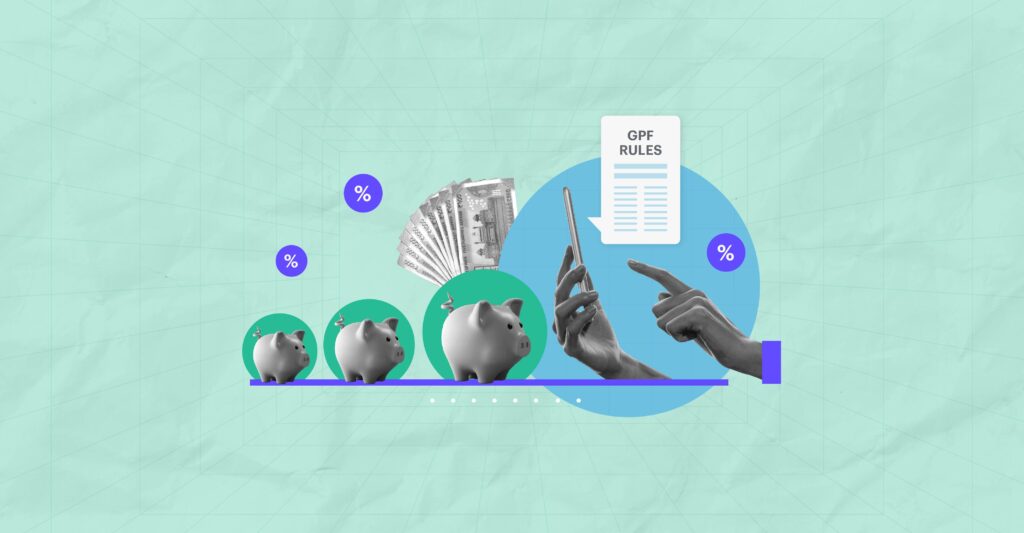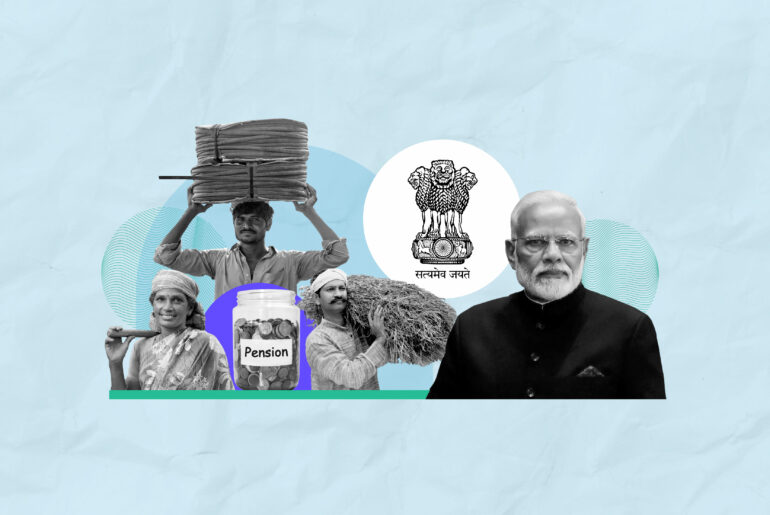Last Updated on Jul 20, 2022 by
Retirement is an essential phase of one’s life. It should be prioritised in your financial plan right from a young age. To help you with your retirement savings goals, the government of India has introduced Provident Funds (PF). The General Provident Fund (GPF) is one of the PF accounts exclusively designed for government employees. The Department of Pension and Pensioner’s Welfare takes care of it. In this article, let us learn more about GPF and the rules.
Table of Contents
What is GPF?
In the General Provident Fund, the government employees contribute a small part of their salaries to the GPF account. They can get their accumulated funds at the time of retirement (maturity date).
It is mandatory for the GPF subscribed employees to contribute their monthly share regularly unless there is a case of suspension. However, employees 3 months close to retirement can stop contributing.
GPF rules
The government has classified the General Provident Fund rules into several categories to make the processes related to GPF simple for the contributors.
1. Eligibility rules
The GPF eligibility rules are as follows.
- All temporary government employees who have worked for a year or more are eligible.
- All the re-employed pensioners (except those eligible for admission to the Contributory Provident Fund) are eligible.
- All permanent employees are eligible.
2. Deposit rules
These rules are about the deposit amount, frequency and maturity date:
- Maximum amount: The maximum contribution to the account should not exceed your total income.
- Minimum amount: The minimum contribution should not be less than 6% of your total income.
- Frequency: You must contribute to the account monthly unless the subscription is suspended.
- Maturity date: The deposits mature only at your retirement or superannuation.
3. Nomination rules
At the time of subscription to the PF account, you can add a nominee to the account who needs to be a family member. You can also add more than one nominee and declare the share of each nominee.
4. Withdrawal rules
The non-refundable GPF withdrawal rules are about when and how much a subscriber can withdraw the funds. The basic criterion for the non-refundable withdrawal is that you should have completed at least 15 yrs of service or within 10 yrs of the date of retirement or superannuation (whichever is earlier). The GPF withdrawal rules are as follows.
- You can withdraw 75% of the outstanding PF account balance to fund education or any event like marriage (yours or dependent family members).
- You can withdraw 90% of the outstanding amount in the case of any medical emergency for yourself or a dependent family member. In 7 days you can receive the amount you want to withdraw.
- You can withdraw 75% of the account balance to purchase a new house or land, renovate/repair it or repay an existing home loan.
- You can withdraw 75% of the balance or 3/4th of the vehicle value (whichever is lower) to purchase a vehicle, pay off a car loan, or repair the car.
- You can withdraw 90% of the balance before 2 yrs of retirement without providing any reason.
- You can withdraw funds to purchase large home appliances like air conditioners or washing machines. However, the funds must be used only to purchase the products you state on the withdrawal form.
- The nominee can withdraw the outstanding amount in the event of the subscriber’s death. They are also entitled to an additional amount of an average of 3 yrs PF balance preceding the event. This additional amount should not be more than Rs. 60,000. Also, as per the GPF part final withdrawal rules, the nominee will be eligible for the additional fund only if the subscriber has been in service for a minimum of 5 yrs.
- At the time of retirement or superannuation, the subscriber is allowed to withdraw the entire amount.
5. Advance rules
The GPF contributors can get an advance of 3 months’ pay or half the account balance (whichever is lower). The GPF temporary advance rules are as follows:
- You can get an advance to fund the higher education of a dependent family member or any event like a marriage.
- You can get an advance in the case of any medical emergency for yourself or a dependent family member.
- You can get an advance to purchase large home appliances like TV, air conditioners or washing machines. Note that funds must be used only for the reason stated.
- You can get an advance to meet the costs of legal proceedings put on or against yourself or a dependent family member.
The advance provided should be paid back in equal instalments for up to 12-24 months. The recovery tenure can be extended to 36 months only if the advance payment is more than 3 months’ pay.
6. Interest rate rules
The GPF interest rate is revised periodically as per government regulations. It was 7.1% per annum from 01 April 2022 to 30 June 2022.
7. Taxation rules
The monthly contributions made, interest rate accrued, and the returns provided from the GPF account are eligible for the tax-exemption category under Section 80C of the Income Tax Act.
FAQs
1. What is GPF full form?
GPF stands for General Provident Fund. It is a provident fund facility provided to the government employees of India.
2. How to check the GPF balance?
You can check your GPF account balance by visiting the e-GPF website and logging in to your account with details like GPF number, employee pin and series code.
3. What are GPF loan rules?
GPF loan is also known as GPF advance, where the contributors can get a temporary advance from their GPF account to fund essential purchases.
4. What are GPF subscription rules?
The GPF subscription rule is that all government employees should be contributing at least 6% of their monthly income to the GPF account.
5. Where can we get the GPF withdrawal form?
You can download the GPF withdrawal form from https://pensionersportal.gov.in. The form needs to be filled out correctly and submitted to the respective authorities for withdrawal purposes.




